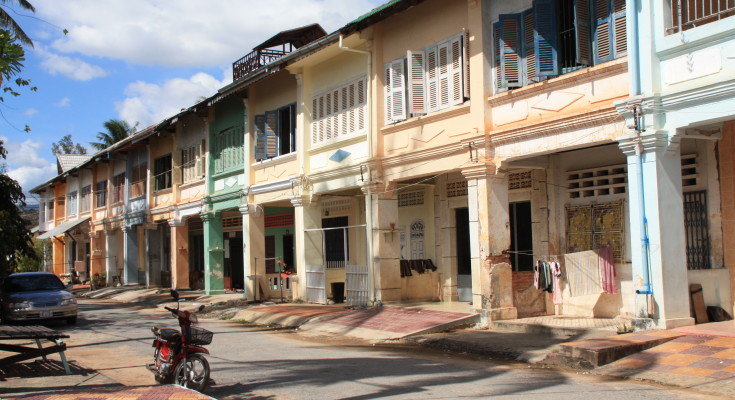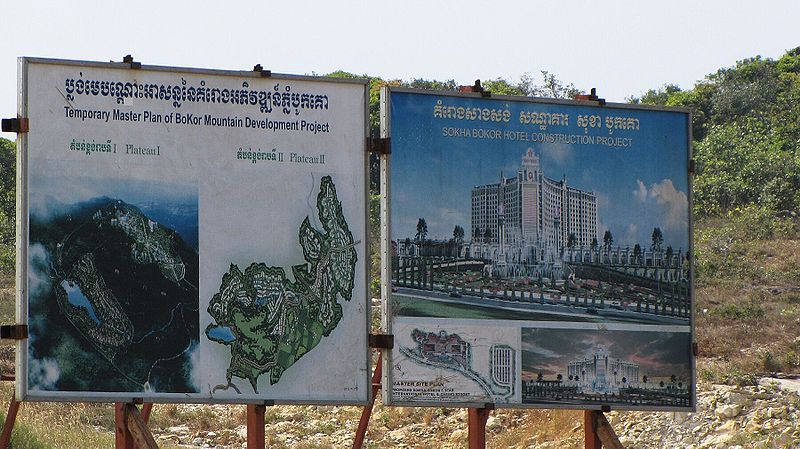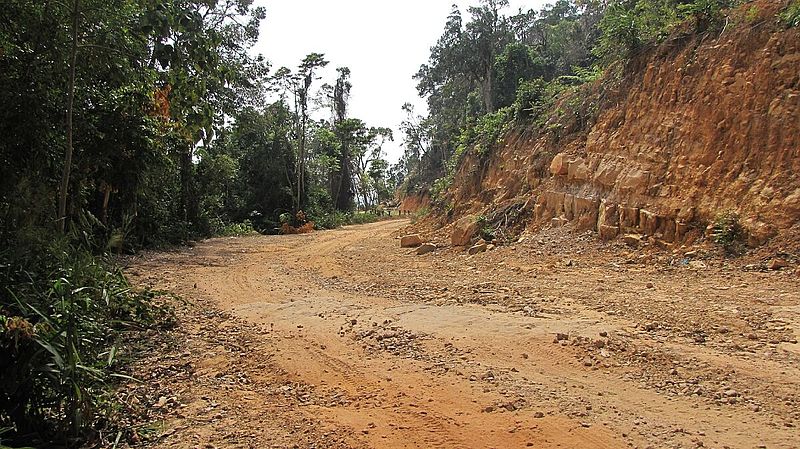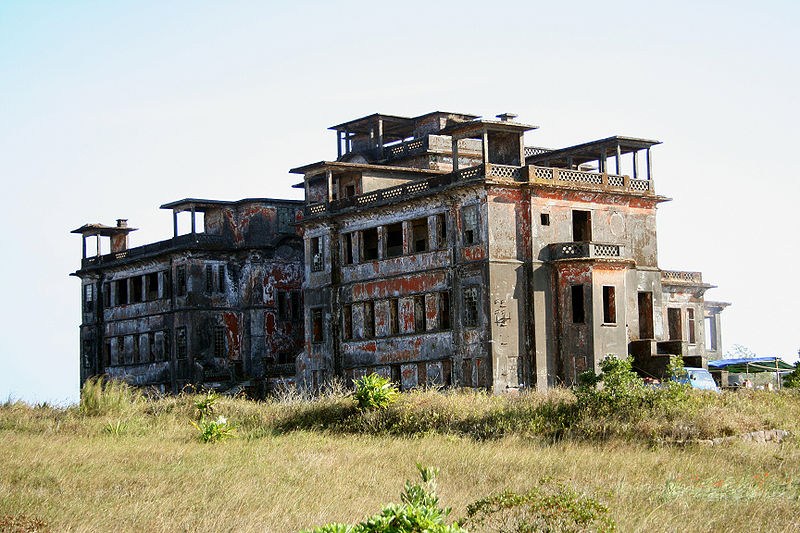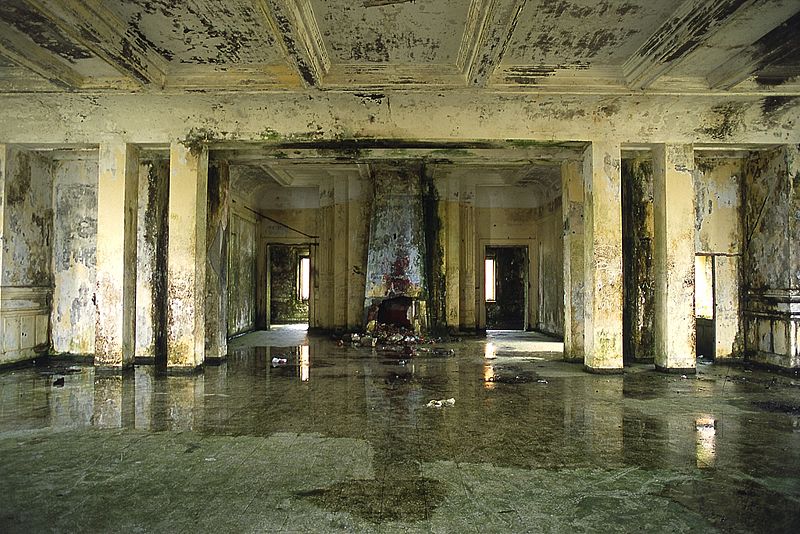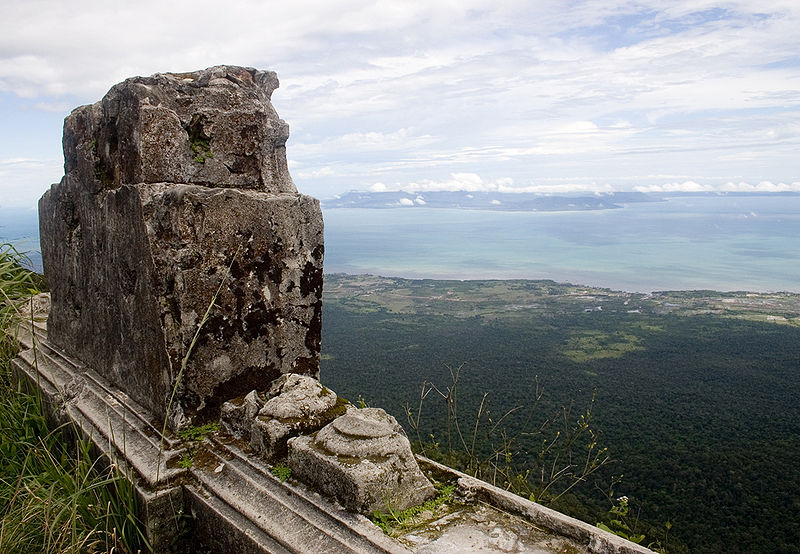By: Willy van Rooijen
At the beginning of the last century, the French built a hotel and casino on top of the Bokor Mountain in the south of Cambodia. Today, the mountain resort is a bizarre ghost town very popular with (backpack) tourists. Most visitors make a trip through a nature reserve that is threatened by the largest investor of Cambodia who bought the place for millions of dollars. Goal: the construction of a luxurious casino and a six-star hotel to attract wealthy gamblers.
The riverside town of Kampot in southern Cambodia is a relief after the hectic pace of the Cambodian capital Phnom Penh. During the four-hour bus ride we think back to our visit to the former Tuolsleng-prison. The torture center, with impressive photos of tense looking prisoners, is now called Tuolsleng Genocide Museum. The building in an ordinary residential area is the ultimate symbol of the repression by the Khmer Rouge regime (1975-1979). The number of victims is estimated at two million. Now the former prison is a must for a growing flow of tourists in Cambodia.
On hired bikes we explore the countryside around Kampot. Like elsewhere in Cambodia we meet waving children and friendly people. Then we go for a day trip to the famous French casino high in the mountains.
“Please. For goodness ‘ sake, do be careful when we get to the Bokor National Park, ” says our guide (” Just call me Tri “) as we climb into a pick-up. With an international group of tourists we leave towards the thousand meter high Bokor Mountain. During the French colonial era villas, a school, a Catholic church and – as its main attraction this famous Bokor Palace annex casino – were built in the cool mountain resort. Now a ghost town remains attracting curiosity seekers from all over the world.
The winding road to the top in the packed pickup offers a beautiful view of the Gulf of Thailand. Somewhere halfway we have to get out at a roadblock. Tri again addresses us seriously: “We cannot continue by car because further up work is going on with excavators to widen the road. Sok Kong, the biggest investor in Cambodia, has purchased the mountain and national park from the state in 2007 for a hundred million dollars to build a new casino, a six-star hotel, a golf course, restaurants and luxury apartments. First Sokimex, the firm of Sok Kong, denied us access. But we objected because as tour operators we feared to find ourselves penniless. As a compromise, we are allowed to go to the top, but we must go partly on foot through the jungle. So please keep strictly to the rules. Otherwise we will be denied access. “
Distant explosions
Through the thicket we take the narrow, steep mountain path – a park ranger with a rifle in front; Tri in the rear to ensure that no one is left behind. The path is a little slippery because it rained last night. One has to beware of tree roots and overhanging branches. Occasionally there are boulders. Suddenly the group stops: a huge yellow and black spider is sitting in its web between the branches. “Non-lethal,” Tri assures us. “You can photograph it, but leave the spider in peace. After a bite you may feel rather unwell for a while.
Yes, as a kid I was already familiar with the jungle. After my father was murdered by the Khmer Rouge, I kept myself hidden in the jungle for a long time. I knew what I could and could not eat and where the dangers were.” We hear many birds, but due to the dense foliage, they are unfortunately not to be seen. Every now and then there is the sound of explosions in the distance. Tri explains: “They are busy with dynamite blowing up stretches of the mountain. I am afraid that in time more and more animals will disappear. Even though Sokimex claims that they want to preserve nature.”
Later, Tri entrusts me that the State used the money paid for the mountain to campaign for the elections of 2008. The party of Prime Minister Hun Sen was re-elected by a large majority.
After an hour and a half of climbing and clambering we are back on the high road. Our pickup is ready for the last – already widened – stretch of road to the top. First we stop at the Catholic church built during the French regime which looks reasonably well preserved. From there we have a good view of the bizarre red and grey Bokor Palace that looks like a haunted castle silhouetted against the cloudy sky.
Black Palace
Pièce de résistance is the still imposing Bokor Palace, surrounded by rugged fields with long swaying grass. All glass panes are broken; the railings severely battered. The walls show bullet holes. Danger! Access forbidden says the warning. But Tri tells us we can take a look at the almost 100 year old building as long as we are cautious with all those crumbled stairways. Everywhere is grit and glass; especially in the large ballroom above the arcade the atmosphere of past glory is tangible. The roof overlooking the remnants of the ghost town includes a Buddhist temple destroyed by the Khmer and the blackened ruins of the Black Palace, a colonial villa. It is not hard to imagine that director Matt Dillon chose this very location for his feature film City of Ghosts, released in 2002. Cambodians prefer not to visit the ‘haunted’ place at night. During the French period it was no exception that gamblers threw themselves into the abyss if they could not pay their gambling debts.
Curry, Baguettes and History
During our lunch – curry and baguettes – at the steps of the casino Tri gives us a refresher seminar on colonial and more recent history. He tells us about the Covenant between Napoleon III and the Cambodian King Ang Duong to keep the Vietnamese and Thai at a distance which made Cambodia in 1863 a French protectorate. He talks about the prisoners during the French colonial regime who had to work as forced laborers in the early 1920s; many of whom died. And about the struggle between the forces of the Khmer Rouge and the Liberation Army of Vietnam who attacked each other from the church and the casino. Neither party wanted to cross the area between the two buildings with all those landmines. Tri: “I know because I myself fought here on the side of the Vietnamese against the Khmer Rouge. And in the early nineties I have assisted in clearing the mines with the UN. “
Instead of going down the slippery trail, at an additional cost I go all the way back with the pick-up. Not such a happy decision. We have to wait a long time as workers with excavators throw huge boulders on the road. A frightening sight. I wonder how many victims the Sokimex project will claim. The road workers don’t seem to be very well protected.
Back to school
At the end of the enervating Bokor-tour we take a relaxing boat trip on the broad Chhau-Tuk River that floats through Kampot. During the French period Kampot was the administrative center of South Cambodia which is still visible in the colonial architecture at the boulevard. The sun slowly disappears behind the Bokor Mountain. A large fleet of gently puttering fishing vessels sails off to the fishing grounds at the mouth of the River. The mate of our ship is sitting back at ease and operates the tiller with one foot. Everywhere schoolgirls in uniform cross the river in small ferry boats on their way home. It seems to be an ordinary sight. But it is absolutely not when you consider that the Khmer Rouge banned education altogether. A time that, luckily for the generation of these girls, seems distant history.

